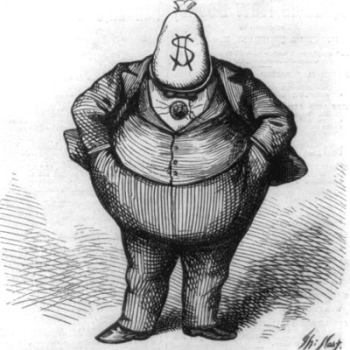Getting laid off is not the same as getting fired.
That should be particularly obvious, as for the past three years America’s economy and the economy of many other countries around the world have been shaped by mass lay-offs and not by mass firings. But yet this confusion persists — particularly on right-wing talk radio, on Fox News and among conservative pundits and politicians.
The effects of this confusion are cruel.
Advice given on the basis of this confusion is foolish.
Policy misinformed by this confusion is futile and ineffective.
So let’s try to clear this up.
Getting laid off is not the same as getting fired.
When a worker is fired, she leaves her job and becomes unemployed. But her job is still there. Her former employer now has a job opening and begins looking to replace her, to hire someone else to sit at her desk or stand at her station.
The effect on the individual worker is more or less the same: She lost her job. But the economy as a whole did not lose her job. Her job is still there, it’s just vacant at the moment.
The net effect of a single firing, thus, is +1 unemployed worker and +1 job opening.
Getting laid off is not the same as getting fired.
When a worker is laid off, her job leaves her and she becomes unemployed. Her job no longer exists. Her former employer does not have a job opening and is not looking to replace her or to hire someone else to sit at her desk or stand at her station.
The effect on the individual worker is more or less the same. She lost her job. But the economy as a whole lost her job too. The job is gone. It does not exist.
The net effect of a single layoff, thus, is +1 unemployed worker and -1 job opening.
That’s a problem. We now have one more person looking for work and one less place to find work.
Now, from 2007 through early 2009 the American economy saw some 8 million or so layoffs. These people were not fired, they were laid off.
The arithmetic involves large numbers, but it is not complicated. The economy gained 8 million unemployed workers and lost 8 million job openings. Those 8 million people could not just go get another job because another job did not exist. We wound up with 8 million fewer places to look for work at the same time that 8 million more people needed to find work.
The confused conservatives seem to mistakenly believe that during the Great Recession those 8 million workers were simply fired.
If that had been the case, the economy would have greeted those 8 million newly unemployed workers with 8 million newly vacant job openings. The relocations, retrainings and logistics of rearranging all of those workers back into the assorted job openings created by their firings would have been unpleasant in the short term, but wouldn’t have created an insurmountable long-term problem for either those 8 million people or for the economy as a whole. That sort of churning and rearranging goes on all the time, which is why economists regard something like a 4 percent unemployment rate as “full employment.”
If those workers had all simply been fired, the scenario would have played out as something like the economic equivalent of a Chinese fire drill that thing we used to do as teenagers at red lights where everybody had to get out of the car, run around it, then get back in (which we referred to by an unfortunate name, the origins of which turn out to be rather ugly) — everyone get up and find a new seat. That would have been disruptive, but still possible because there would still have been one seat for every displaced worker.
But that is not what happened during the Great Recession. Those 8 million workers were not fired, they were laid off.
Getting laid off is not the same as getting fired.
Those 8 million workers got up and their seats were taken away. They cannot find new seats because there are not nearly enough seats to go around. Those 8 million or so workers cannot simply find new jobs because there are 8 million fewer jobs to be found.
The most recent figures, if you want to be precise: 14.2 million looking for work; 3.4 million job openings. That means 10.8 million Americans right now, today, are royally, epically screwed.
That means it wouldn’t matter if every unemployed American followed all the advice for what job-seekers are supposed to do. If every single one of them keeps a positive attitude while still being willing to settle for less, if each and every one of them takes classes and volunteers to keep their skills sharp, if each and every one networks furiously, gets up every morning, showers, shaves and gets dressed for the office before sending out dozens of perfect, enticingly crafted résumés all day, every day, then 10.8 million of them will still not find jobs because there are 10.8 million fewer jobs than there are job seekers.
That is the situation. That is what we are up against.
Millions of people got laid off. They weren’t fired — they were laid off. Their jobs are gone and now there aren’t enough jobs.
Getting laid off is not the same as getting fired.












